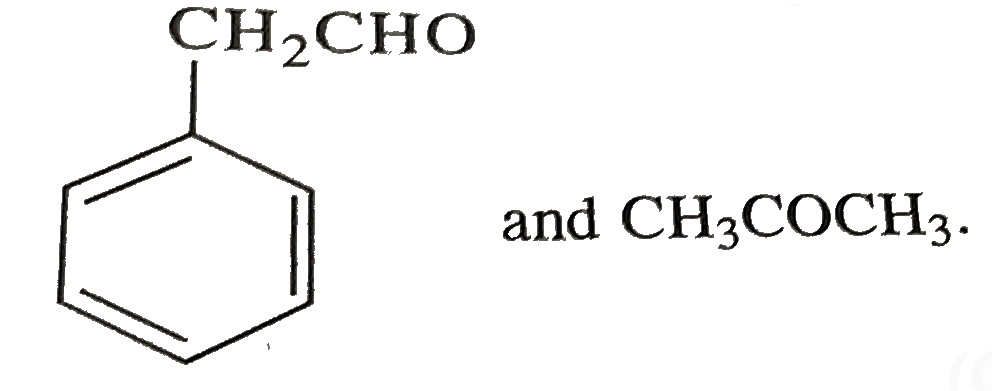What simple laboratory test could be performed to distinguish between 1-pentyne and 2-pentyne?
the addition of Ag+ in ammonia
the addition of H2SO4 in Hg+2
the addition of Br2 in CCl4
the addition of H2 on a Pt catalyst.
The correct Answer is:A
To distinguish between 1-pentyne and 2-pentyne, we can perform a simple laboratory test using Tollens' reagent. Here’s a step-by-step solution:
1. Understand the Structures:
- 1-pentyne (C5H10) is a terminal alkyne, meaning it has a triple bond at the end of the carbon chain.
- 2-pentyne (C5H10) is a non-terminal alkyne, meaning the triple bond is located between the second and third carbon atoms.
2. Prepare Tollens' Reagent:
- Tollens' reagent is a solution of silver nitrate (AgNO3) in ammonia (NH3). It is used to test for the presence of aldehydes and terminal alkynes.
3. Perform the Test:
- Take a small amount of the sample (either 1-pentyne or 2-pentyne) and add it to a test tube containing Tollens' reagent.
4. Observe the Reaction:
- If the sample is 1-pentyne, a silver mirror will form on the walls of the test tube due to the reduction of silver ions (Ag+) to metallic silver (Ag). This indicates a positive result.
- If the sample is 2-pentyne, no silver mirror will form, indicating a negative result.
5. Conclusion:
- The formation of a silver mirror indicates the presence of 1-pentyne (the terminal alkyne), while the absence of a silver mirror confirms the presence of 2-pentyne.
- 1-pentyne (C5H10) is a terminal alkyne, meaning it has a triple bond at the end of the carbon chain.
- 2-pentyne (C5H10) is a non-terminal alkyne, meaning the triple bond is located between the second and third carbon atoms.
- Tollens' reagent is a solution of silver nitrate (AgNO3) in ammonia (NH3). It is used to test for the presence of aldehydes and terminal alkynes.
- Take a small amount of the sample (either 1-pentyne or 2-pentyne) and add it to a test tube containing Tollens' reagent.
- If the sample is 1-pentyne, a silver mirror will form on the walls of the test tube due to the reduction of silver ions (Ag+) to metallic silver (Ag). This indicates a positive result.
- If the sample is 2-pentyne, no silver mirror will form, indicating a negative result.
- The formation of a silver mirror indicates the presence of 1-pentyne (the terminal alkyne), while the absence of a silver mirror confirms the presence of 2-pentyne.
Topper's Solved these Questions
- STRUCTURAL IDENTIFICATIONBOOK - RESONANCE ENGLISHCHAPTER - STRUCTURAL IDENTIFICATIONEXERCISE - Advanced level Problems (Part-II)
21 Videos
- STEREOISOMERISMBOOK - RESONANCE ENGLISHCHAPTER - STEREOISOMERISMEXERCISE - EXERCISE (PART III : PRACTICE TEST-2 (IIT-JEE (ADVANCED PATTERN))
23 Videos
- SURFACE CHEMISTRYBOOK - RESONANCE ENGLISHCHAPTER - SURFACE CHEMISTRYEXERCISE - Section - 5
1 Videos
Similar Questions
A test cross is performed to distinguish between
View SolutionWhich of the following tests could be performed to distinguish between 1-butyne and 2-butyne. ?
View SolutionWrite test to distinguish between

View SolutionWhich of the following tests could be performed to distinguish between 1-butyene and 2-butyene?
View SolutionGive chemical test to distinguish between

View SolutionA test cross distinguishes between :
View SolutionGive a test to distinguish between aldehyde and ketone.
View SolutionGive the chemical test to distinguish between 2-butyne and 1-butyne.
View SolutionGive a test to distinguish between propan-2-one and penten-3-one.
View SolutionGive one chemical test to distinguish between acetone and phenol.
View Solution
